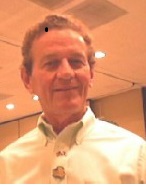Philip Smith was born in 1934 in Roodhouse, Illinois. After graduating from the Institute of Aviation at the University of Illinois, he enlisted in the U.S. Air Force on November 16, 1954, and entered the Aviation Cadet Program in 1956. Smith was commissioned a 2d Lt and awarded his pilot wings at Bryan AFB, Texas, on June 29, 1957. Lt Smith completed Advanced Gunnery School in the F-86 Sabre at Williams AFB, Arizona, and then F-100 Super Sabre transition training at Nellis AFB, Nevada, before serving with the 8th Tactical Fighter Squadron (TFS) of the 49th Tactical Fighter Wing (TFW) at Etain AB, France from April 1958 to August 1959, and then at Spangdahlem AB, West Germany, until April 1961. His next assignment was as an F-104 Starfighter pilot with the 434th TFS of the 479th TFW at George AFB, California, from April 1961 to January 1962, followed by service as Ground Training Officer for the 479th TFW from January to May 1962.
He flew with the 435th TFS, also in the 479th TFW at George, from May 1962 to April 1965, when he deployed to Southeast Asia with the 436th TFS. Capt Smith flew 80 combat missions out of Da Nang AB, South Vietnam, before he was forced to eject near Hainan Island and was captured and taken as a Prisoner of War by the Chinese on September 20, 1965. After spending 2,734 days in captivity, Maj Smith was released during Operation Homecoming on March 15, 1973. He was briefly hospitalized to recover from his injuries at Scott AFB, Illinois, and then attended Air War College at Maxwell AFB, Alabama, from August 1973 to June 1974.
After completing Jet Fighter Recurrence Training at Randolph AFB, Texas, he was assigned to the 49th TFW at Holloman AFB, New Mexico, flying the F-4 Phantom II. Col Smith then commanded the 465th Tactical Fighter Training Squadron, and served as assistant director of operations of the 479th Tactical Fighter Training Wing at Holloman until July 1978, when he was assigned as director of combat operations with Headquarters U.S. Air Forces in Europe at Ramstein AB, West Germany.
His next assignment was as base commander of Hellenikon AB, Greece, from June 1980 to July 1983, followed by service as deputy base commander and then base commander of Bergstrom AFB, Texas, from July 1983 to July 1984. Col Smith’s final assignment was on the staff of the Air Force Inspector General at Norton AFB, California, from July 1984 until his retirement from the Air Force on July 1, 1987. He and his wife Peggy reside in Arizona.
“On 20 September 1965 Smith was flying his F-104C #56-883 on a mission to escort an EC-121 over the Gulf of Tonkin when due to equipment failure and incorrect navigational commands he strayed into Chinese airspace over Hainan. His aircraft was intercepted and shot down by two Shenyang J-6 fighters of the People’s Liberation Army Naval Air Force near Haikou. Smith ejected successfully and was captured by PLA forces. On 21 September the U.S. military acknowledged that Smith was missing and reported that Smith had radioed that he was experiencing mechanical problems and fuel shortage, but did not confirm that he had been shot down.
Initially he refused to speak to the PLA Navy personnel who captured him. However, when a PLA Air Force Officer entered the room, He stood up and gave a salute. He explained that he did not realise the PLA Navy personnel were regular forces, citing their newly changed grey Type 65 Navy uniforms.
He was first taken to Guangzhou for interrogation and then later transferred to Beijing. Most of his captivity was spent in solitary confinement; however, he did meet John T. Downey and Richard Fecteau both of whom were CIA agents captured in 1952.”(1)
Source (1): Wikipedia






















